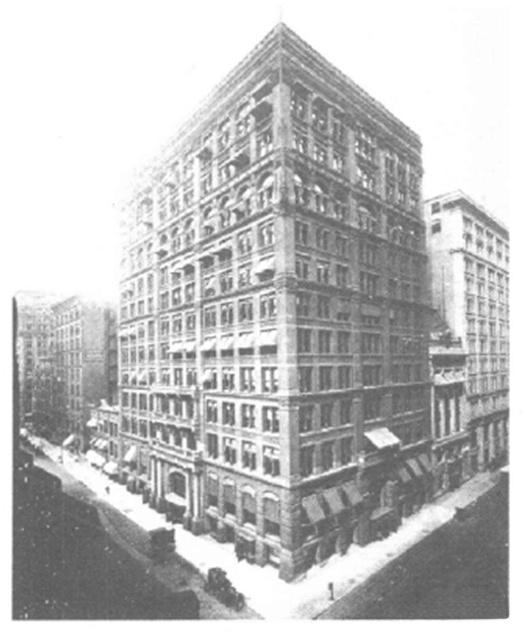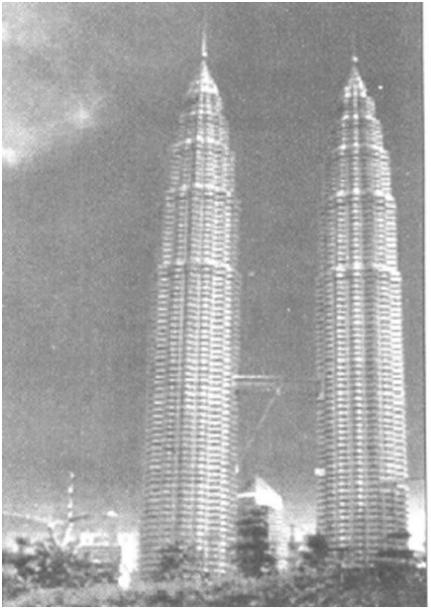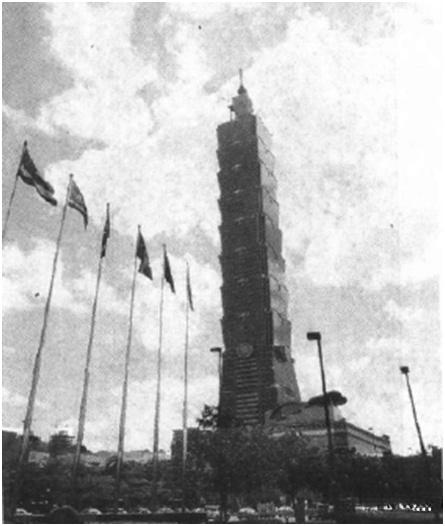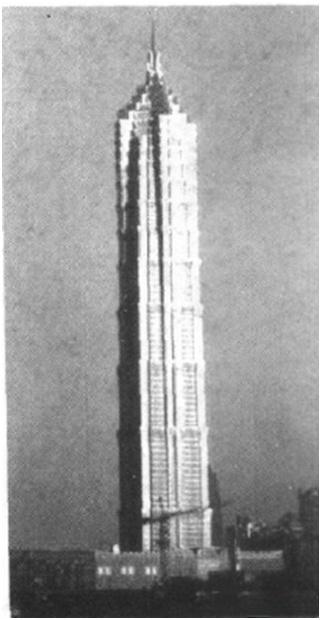QR Code

In the history of human construction, natural materials such as earth, stone and wood were first used by humans as building materials. With the advancement of science and technology in human society, iron and steel were produced on a large scale, bringing a strong, high-performance material to construction, making it possible to build taller and safer buildings.
The world's iron and steel industry in Europe developed the earliest, and thus iron and steel buildings in Europe is also the earliest application. 1720 Europe began large-scale production of pig iron, 1784 has been the production of mature iron, this period of time Europe began to use iron to build bridges, the end of the 18th century, the British cotton mills began to use iron columns, iron beams to replace the original wooden columns and beams, in order to get a larger production of openings and floor loading capacity, the world's first iron column buildings (1772), the first iron column multi-storey building (1793) and the first complete iron frame structure building (1797) were built in Britain.
The mass production of I-iron profiles in Europe in 1854, which were more convenient for building purposes, and the production of mild steel in 1864, which had better properties, led to a wider use of steel buildings, and a chocolate factory called Me - nier (Figure 1-1), built near Paris in 1872, is considered to be the first multi-story, steel-framed building on the European continent. The building was constructed purely of a steel skeleton, with beams and columns rigidly connected and braced to withstand wind loads, a structural system that is still commonly used in modern multi-story steel buildings.

Figure 1-1
Iron column structure introduced into the United States in the early 19th century, to the end of the 19th century, with the acceleration of the process of urbanization in the United States, multi-high-rise steel buildings in the United States to the rapid development of the United States. 1885 in the United States of America in Chicago was completed in what is considered the world's first high-rise steel building - 10-storey, 55m high Home Insurance building (Figure 1-2). The building uses steel beams and iron columns frame structure, the external brick wall is still load-bearing wall. The 9-story, 37-meter-high Rand MaNally Building, built in Chicago in 1889, used an all-steel frame, eliminating load-bearing walls, and was actually the world's first true high-rise steel frame building.

Figure 1-2
Into the 20th century, with the improvement of steel structure design method, steel structure building in the United States first entered the “skyscraper” era. 1900 around the completion of the 36-story steel structure Park Row building in New York, was the world's tallest building at that time. 1907 in New York completed the Singer Building, 47-story 187m high, is the world's first modern pyramid than the Egyptian tall tall high-rise. In 1918, New York completed the 60-story, 242-meter-high Wool-worth Building, the world's tallest building at the time. And in 1931 in New York completed the 102-story 381m high Empire State Building (Figure 1-3), is a milestone in the world of high-rise buildings, this building to maintain the world's highest building records for 40 years.

Figure 1-3
In 1965, Dr. Fazlur Rahman Khan, a famous structural engineer of SOM (Skidmore, Owings and Merrill) architectural firm in the U.S., firstly put forward the concept of silo structure, and based on this new structural concept and the rapidly developing computational structural mechanics in the 1960s, the U.S. designed and built several super-high-rise silo steel buildings (Table 1-1), including the well-known World Trade Center (Figure 1-4) and the Sears Tower (Figure 1-5). Based on this new structural concept and the rapid development of computational structural mechanics in the 1960s, the United States has designed and constructed several super high-rise cylindrical buildings (Table 1-1), including the well-known World Trade Center (Fig. 1-4) and the Sears Tower (Fig. 1-5).

Figure 1-4

Figure 1-5
In addition to the United States, Japan is the country with more high-rise steel buildings, the reason for which, in addition to the well-developed iron and steel industry, there is another important reason to consider earthquake resistance. Because Japan is a multi-earthquake country, until 1963 the Japanese building code only revised the building is not allowed to exceed 31m high provisions. In seismic, fire, wind and other scientific and technological issues on a series of major research breakthroughs, Japan in 1964 announced a new building ordinance, canceled on the building height limitations, completed in 1965, the first 22-storey 78m-high steel high-rise building in Tokyo, Tokyo, the new Otani Hotel. Since then, high-rise steel buildings in Japan has been the rapid development of 36-story 147m high steel Kasumigaseki building built in 1968 as a symbol, Japan really entered the high-rise steel structure development period. By the 1980s, the total number of steel high-rise buildings in Japan was second only to that of the U.S., and in the scientific research of high-rise steel structure, the development of steel, the improvement of production and installation technology, etc., have achieved great results, accumulated rich experience, and technically formed their own characteristics. At present, the vast majority of new high-rise buildings above 20 floors in Japan adopt steel structure.
The United Kingdom is the highest proportion of steel structure buildings in Europe, according to the area, about 50% of the buildings in the United Kingdom are using steel structure, the early 1980s the British multi-high-rise buildings of different materials structural composition. The common use of steel structure in high-rise buildings in the UK has benefited from the long-term support and investment of British Steel (later to become Corus) in theoretical research, technological development and education of steel structure.
Southeast Asia is a latecomer to the world economic development, high-rise buildings began to be built in large numbers in this region after the 1970s, but most of them are reinforced concrete structures. However, after entering the 1990s, the use of steel structure in high-rise buildings has become more and more common, and the number of ultra-high-rise steel structure buildings has increased year by year, such as the 71-story 369-meter-high Bank of China Tower built in Hong Kong in 1988 (Fig. 1-6), and the 88-story 450-meter-high Twin Towers built in Kuala Lumpur, Malaysia, in 1997 (Fig. 1-7).

Figure 1-6

Figure 1-7
As well as the 101-story, 508m-high Taipei Financial Center Building (Figure 1-8) completed in Taipei are representative of ultra-high-rise steel buildings.

Figure 1-8

Figure 1-9
Due to technical and economic reasons, high-rise steel structure buildings have been built in China since the mid-1980s. Since then, with China's reform and opening up and economic development, dozens of high-rise steel structure buildings have been constructed in Shanghai, Beijing, Shenzhen, Guangzhou, Dalian, Xiamen, Shenyang, Tianjin, etc. Especially in the development and construction of the Pudong New Area of Shanghai, a lot of high-rise buildings have been built with steel structure, and the 88-story 421m-high Jin Mao Tower (Fig. 1-9), which is currently the tallest building in mainland China, is listed as the third in the world. In 1998, the 88-story 421-meter-high Jinmao Tower (Figure 1-9) was built, which is currently the highest building in mainland China and the third in the world, marking that China's high-rise buildings have entered the advanced ranks in the world.

Copyright © 2024 Qingdao Eihe Steel Structure Group Co., Ltd. All Rights Reserved.
Links | Sitemap | RSS | XML | Privacy Policy |
TradeManager
Skype
VKontakte
